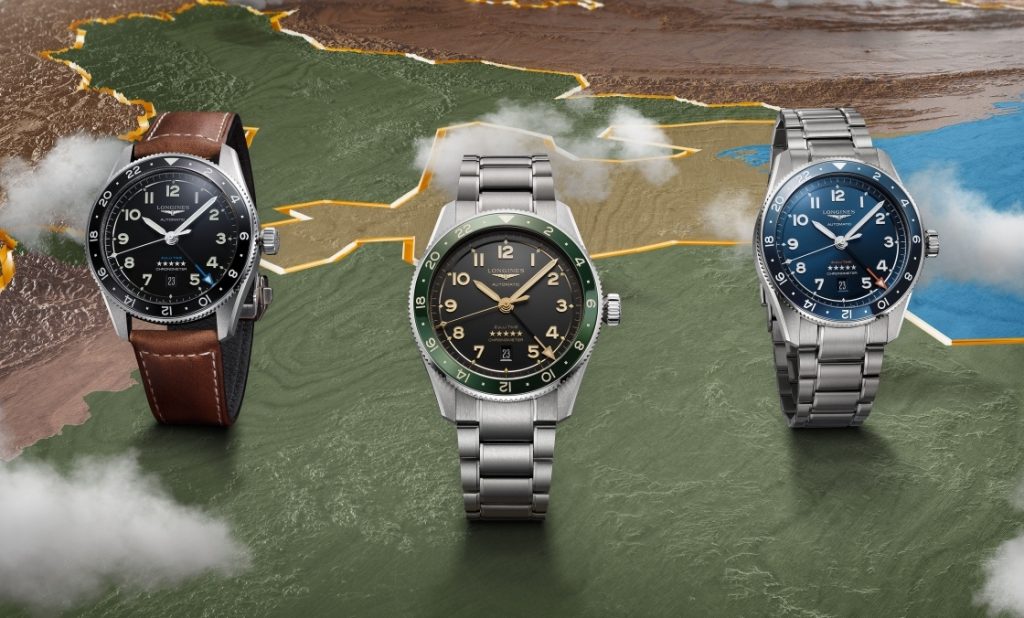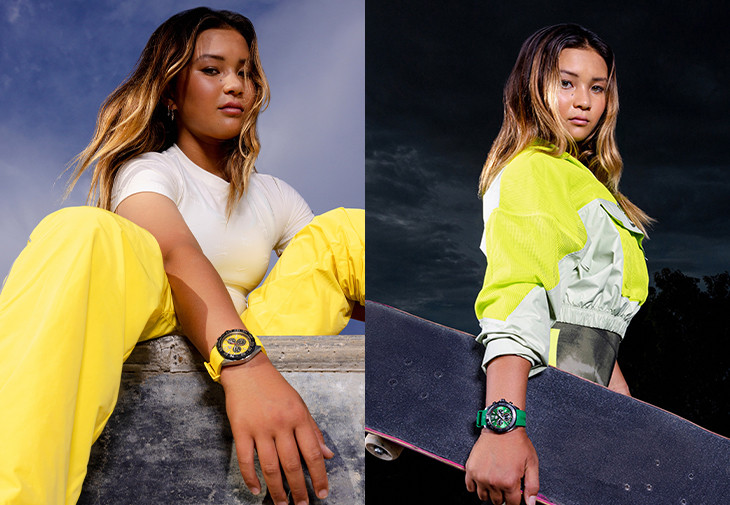Introduction
In the world of luxury watches, Tag Heuer and Longines stand as two of the most iconic Swiss brands, each with a rich history, distinct identity, and significant cultural impact. While both share a commitment to exceptional craftsmanship and precision, their respective paths and cultural influences within the watchmaking industry—and beyond—differ considerably. From their historical ties to sports and motorsports to their roles in popular culture, Tag Heuer and Longines have cultivated unique legacies, each contributing to the evolution of Swiss watchmaking and the broader landscape of luxury timepieces.
This article seeks to delve into the cultural influence and brand impact of these two prestigious brands, offering a comprehensive comparison of their heritage, sponsorships, endorsements, partnerships, marketing strategies, and the role they play in the worlds of sports, fashion, and popular culture. By understanding their cultural influence, we can better appreciate how each brand has shaped the identity of modern watchmaking.
In this exploration, we will investigate the elements that define the cultural relevance of both Tag Heuer and Longines, evaluate their contributions to global culture, and determine which of the two brands has had a more substantial and lasting influence.
Chapter 1: Tag Heuer – The Brand of Performance and Precision
1.1 A History of Innovation and Motorsport Legacy
Tag Heuer’s story begins in 1860, when Edouard Heuer founded the brand in St-Imier, Switzerland. Since its inception, Tag Heuer has focused on creating watches that pushed the boundaries of precision and innovation. However, it is the brand’s deep-rooted connection with motorsports and sports timing that has shaped much of its cultural influence.
One of the major milestones in Tag Heuer’s cultural history is its partnership with motorsports. The company’s chronograph innovations were widely used in automotive racing, an association that continues to this day. Tag Heuer’s Carrera collection, for example, was designed with input from legendary racing drivers and engineers, while the Monaco line gained global fame when it was worn by actor Steve McQueen in the 1971 film Le Mans, cementing the brand’s position as a symbol of speed, performance, and style.
In the world of motorsports, Formula 1 racing remains the most significant partnership for Tag Heuer. Over the years, Tag Heuer has been a key sponsor of some of the most prestigious F1 teams, and the brand has become synonymous with high-performance timekeeping in the motorsports world. The brand’s Formula 1 collection draws directly from the fast-paced world of racing, making it a favorite among enthusiasts of both watches and motorsports.
1.2 Tag Heuer and Sports: Precision Meets Performance
Beyond motorsports, Tag Heuer has extended its cultural influence into various other sports, including cycling, skiing, Formula E, and professional football. The brand’s longstanding association with the Olympics, touring car racing, and leagues like Premier League football reflects its commitment to precise timing in high-stakes environments.
Tag Heuer’s sponsorships in Formula E (the fully electric car racing series) exemplify how the brand has evolved its cultural influence, embracing the future of motorsport by supporting sustainability and cutting-edge technology. This reflects the brand’s drive not just to be associated with fast cars, but also with a modern, forward-thinking image.
1.3 Tag Heuer’s Celebrity Endorsements and Popular Culture
Tag Heuer’s celebrity endorsements and presence in popular culture have also played a major role in shaping the brand’s cultural relevance. The Monaco watch, in particular, became an enduring symbol of style after Steve McQueen’s iconic portrayal of a racing driver in Le Mans. This connection to film, and the subsequent rise in recognition of Tag Heuer as a brand, has led to partnerships with other high-profile figures across entertainment and sports.
Actors like Brad Pitt and Cristiano Ronaldo have lent their faces to the brand, showcasing Tag Heuer’s versatility as a brand that appeals to both luxury watch collectors and sports enthusiasts. As a result, Tag Heuer has built a reputation not only for technical excellence but also for lifestyle appeal, positioning itself as a brand that symbolizes luxury, performance, and success.
1.4 Marketing Strategies: Speed, Performance, and Boldness
Tag Heuer’s marketing campaigns have consistently centered around themes of precision, boldness, and performance. Through famous slogans like “Don’t Crack Under Pressure”, the brand has positioned itself as the watchmaker for individuals who excel under pressure, whether in sports, business, or life. The brand’s bold aesthetics, including the striking design of the Monaco and the contemporary look of the Carrera, reinforce the brand’s association with modernity and speed.
Tag Heuer’s digital campaigns and social media presence have also allowed it to remain relevant to younger audiences, creating content that is both engaging and dynamic. The brand’s positioning as a lifestyle brand has allowed it to transcend traditional watchmaking circles and appeal to tech-savvy, youth-oriented consumers, further increasing its cultural footprint.

Chapter 2: Longines – A Tradition of Elegance and Precision
2.1 The Legacy of Elegance: A Brand Rooted in Tradition
Founded in 1832 by Auguste Agassiz, Longines is one of the oldest Swiss watchmakers in existence today. While Tag Heuer has carved its niche in the world of motorsports and sports timing, Longines has positioned itself as the epitome of elegance, timelessness, and precision. The brand is known for producing watches that combine technical expertise with elevated aesthetics.
Longines’ long history with aviation and sports timing has influenced its cultural standing. The brand was an official partner for the Olympic Games for many years, a relationship that helped solidify its status as a trusted and reliable timekeeper in international sporting events. Longines was also closely involved in equestrian sports, further highlighting its association with refinement, grace, and tradition.
2.2 Longines and the World of Sports
While Longines has not been as heavily involved in motorsports as Tag Heuer, the brand has a rich tradition of involvement in equestrian sports, skiing, and athletics. Longines has been a key sponsor of events like the Longines Global Champions Tour, one of the world’s most prestigious equestrian competitions. Additionally, Longines has collaborated with skiing events like the FIS Ski World Cup, expanding its influence in the world of winter sports.
The Longines Master Collection also epitomizes the brand’s dedication to elegance and precision, with its sophisticated mechanical movements and timeless design. For Longines, the focus has been more on the aesthetic appeal of its timepieces rather than the adrenaline-fueled performance that defines Tag Heuer’s cultural influence.
2.3 Longines’ Celebrity Endorsements and Popular Culture
Longines’ cultural influence in popular culture is less focused on high-octane sports and more on elegance and lifestyle. The brand has been represented by high-profile figures like Aishwarya Rai Bachchan, a former Miss World and Bollywood actress, who symbolizes the brand’s association with beauty, grace, and global sophistication.
Longines’ connection to Hollywood and fashion has allowed it to tap into an audience that appreciates the fusion of luxury with elegance. The brand’s watches, such as those from the Master Collection or Heritage series, are often seen as timeless pieces that can be worn across generations, appealing to consumers who value sophistication over trendiness.
2.4 Marketing Strategies: Elegance and Timelessness
Longines’ marketing strategy is rooted in the heritage and tradition that have shaped the brand’s identity over the years. The company’s advertising campaigns often highlight refinement, sophistication, and grace—values that resonate strongly with consumers seeking a more classical sense of luxury. The brand’s marketing messages, such as “Elegance is an attitude”, emphasize its commitment to timelessness and understated beauty.
The use of celebrities and ambassadors in Longines’ campaigns helps to maintain the brand’s position as an elegant and world-class watchmaker, appealing to individuals who want a piece of Swiss heritage without the overtly aggressive branding seen in other luxury watches.
Chapter 3: Comparing the Cultural Impact of Tag Heuer and Longines
3.1 Branding and Cultural Positioning
- Tag Heuer has a cultural identity centered around performance, precision, and innovation. Its partnerships with Formula 1, Hollywood, and sports celebrities have positioned the brand as a symbol of adrenaline and speed, appealing to both high-performance athletes and lifestyle enthusiasts.
- Longines, on the other hand, is a brand deeply rooted in tradition, elegance, and refinement. Its association with sports like equestrian events, skiing, and the Olympics emphasizes the brand’s commitment to grace and timeless sophistication.
3.2 Cultural Reach and Popularity
- Tag Heuer enjoys a more global appeal, particularly in the world of motorsports and youth-driven sports cultures. Its watches are worn by athletes, celebrities, and motorsport fans, giving it an edge in modern, performance-driven markets.
- Longines, with its emphasis on elegance and timeless luxury, appeals more to traditional watch collectors, fashion enthusiasts, and sophisticated individuals seeking a classic and refined timepiece. It has a broader appeal in high society and fashion circles.
Conclusion: Which Brand Has the Greater Cultural Impact?
Both Tag Heuer and Longines are deeply influential in the world of horology, but their cultural impacts lie in different spheres. Tag Heuer has shaped the world of sports and performance, becoming synonymous with motorsports, youth culture, and modern luxury, while Longines has cultivated a rich legacy rooted in elegance, tradition, and refinement.
For those who value speed, precision timing, and the thrill of performance, Tag Heuer stands as the brand with the greater cultural influence. For those who seek timeless elegance and refined beauty, Longines represents the gold standard in luxury and heritage.
Ultimately, the greater cultural impact is subjective, as each brand appeals to different ideals and aspirations within the broader watchmaking community. Both have carved their names into the annals of Swiss horology, leaving a profound legacy for future generations.





































